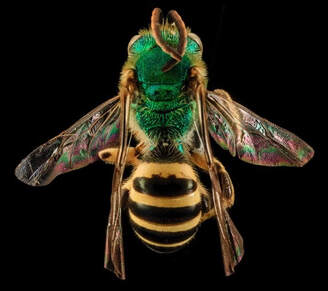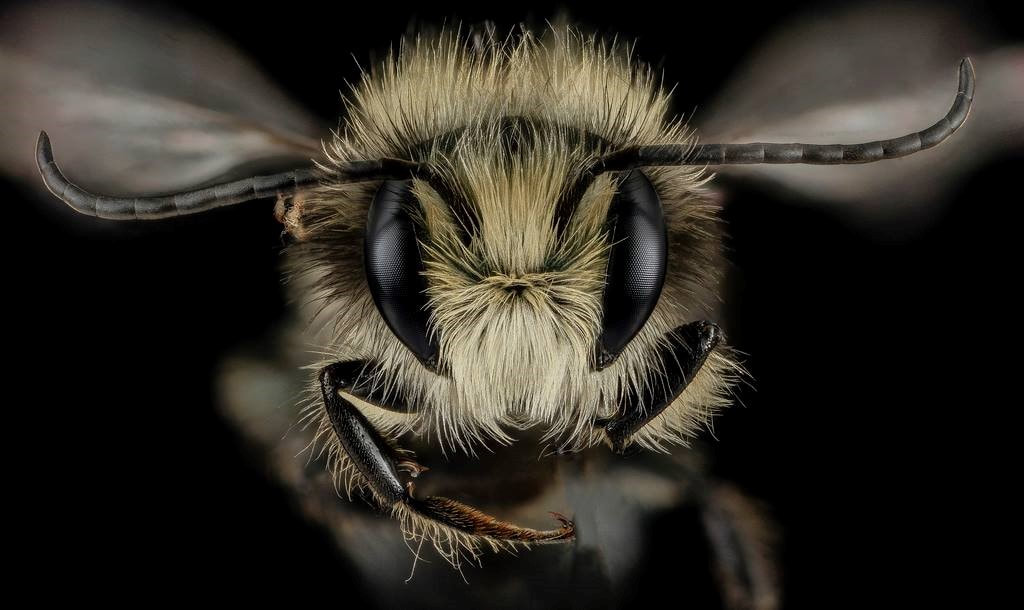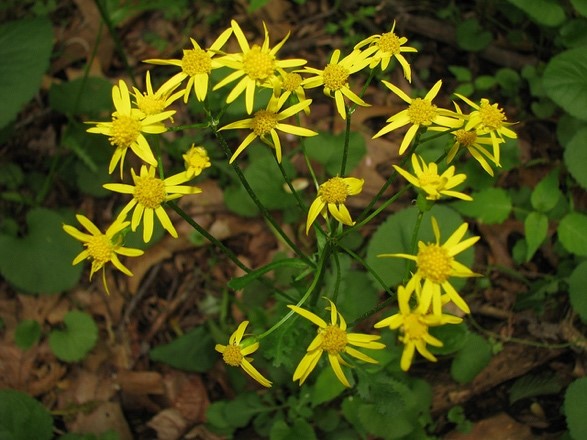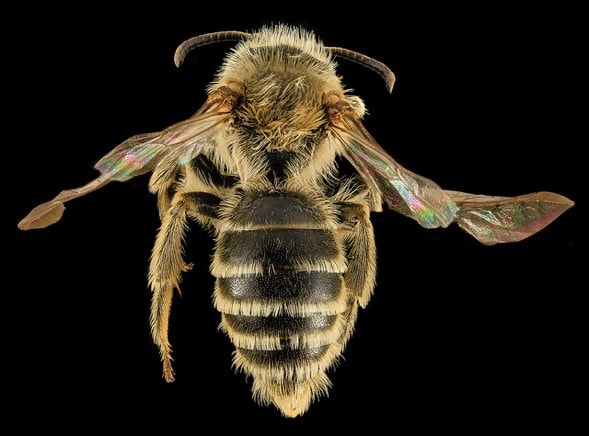|
Written by: Lindsay Barranco and Krisztina Christmon Sam Droege is a wildlife biologist at USGS Patuxent Wildlife Research Center in Laurel, Maryland, where he runs the Native Bee Lab and conducts research that focuses on wild bee population conservation and management. Researchers far and wide send Sam bee specimens for identification and his work involves maintaining an inventory and monitoring program for native bees, and providing an online identification guide for North American bees at www.discoverlife.org .  Figure 1 Agapostemon splendens Figure 1 Agapostemon splendens Bee Species in Maryland This can be a difficult number to ascertain based on the fact that there are only a small number of researchers regularly collecting bees within Maryland, and an even smaller number who are able to accurately identify bees to the species level. Bee identification takes years of experience to master and funding such work is not often prioritized. While numerous states maintain “official state insect collections”, Maryland does not have a historical collection of native bees, and consequently, we are not able to compare recent survey samples with samples from the beginning of the century. The Smithsonian National Collection has preserved some Maryland native bee specimens, and the origins of that collection dates back 100 years, when nature enthusiasts would collect bees and other insects along the end of old train lines in places like Glen Echo, Odenton and Chesapeake Beach, Maryland. Since 2002, Sam Droege has inventoried the bees of Maryland and maintained that bee database on the Discover Life website. Based on samples he and others have collected since 2002, Droege has been able to identify 445 individual bee species in Maryland alone, and new species are found within the state each year! The most common bee species found in Maryland is Agapostemon splendens (Figure 1), commonly known as the brown-winged striped-sweat bee, in the family Halictidae. Since 2002, the Droege lab identified and recorded 10,411 individuals of this bee species in Maryland. Sam Droege emphasized that the conservation of bees is very dependant on the conservation of native flowering plant species. Young bees can only develop into adults if they are fed pollen and many specialist bees are only able to digest and process the pollen of its specialist plant host. For example, a bee known as Osmia texana, a thistle plant pollen specialist, was only discovered three years ago in Maryland, in some of the southern eastern shore counties where the thistle plant grows in abundance. Droege noted that bees are often discovered in areas because a bee researcher just happens to collect in a certain area at a certain time. Studying bees involves challenging long-held assumptions that certain bee species feed on the pollen of specific plants if they are observed on them again and again over time. Droege gave the example of the bee species Nomada seneciophila (Figure 4), which translates to “Senecio lover” (Senecio is the former name of Ragwort, which is now known as Packera (Figure 2). This bee had been identified many years ago as a feeder of Ragwort and was named accordingly. Ragwort is also the specialist host plant of the specialist bee species Andrena gardineri, commonly known as the Ragwort bee (Figure 3). By tracking the geographic location of N. sceneciophila and A. gardineri over time, and noticing that both bees appeared on Ragwort, scientists took a closer look and eventually discovered that N. seneciophila was not a lover of Ragwort pollen at all, but rather, was a nest parasite of A. gardineri. More Flowering Plants are Needed!
With the news of bee declines in the scientific and popular press, what steps can people take to help bees? Droege’s response is to plant more flowering plants, especially specialist host plants for native bees, like native perennials and shrubs since most specialist bees need pollen from perennials and shrubs and less frequently from trees and annual plants. More plants and less lawn means more bees. Droege did a very rough calculation of the number of inventoried bees and Maryland honey bees produced in Maryland per year and estimated that number to be 211,810,488,600! That means 26,914 bees per acre! Let’s keep that number up by planting what they need. For more information on specialist bees and their host plants see the references below. All images used were taken by Sam Droege and presented at the UMD Entomology Colloquium on 8/30/2019 If you are interested in learning more about Sam Droege’s work, follow the lab on social media @USGSBIML Instagram: https://www.instagram.com/usgsbiml/?hl=en Facebook: https://www.facebook.com/groups/usgsbiml/ Tumblr: https://usgsbiml.tumblr.com/post/184403237012/more-tiny-beings-in-hand-sanitizer-this-is-a Flickr: https://www.flickr.com/people/usgsbiml/ References: North American Native Bee Collaborative (2017). Bees of Maryland: A Field Guide. Retrieved from http://bio2.elmira.edu/fieldbio/handybeemanual.html Fowler, J. & Droege, S. Pollen Specialist Bees of the Eastern United States. Retrieved from https://jarrodfowler.com>specialist_bees Written by: Lindsay Barranco is a Masters student at the vanEngelsdorp honey bee lab working on wildflower meadow projects with partners throughout the State of Maryland and is researching the establishment of ground nesting native bee sites within small scale wildflower plantings. Krisztina Christmon is a PhD student at the vanEngelsdorp honey bee lab and studies the host-parasite-pathogen interaction of the honey bee parasitic mite. Comments are closed.
|
Categories
All
Archives
June 2024
|
Department of Entomology
University of Maryland
4112 Plant Sciences Building
College Park, MD 20742-4454
USA
Telephone: 301.405.3911
Fax: 301.314.9290
University of Maryland
4112 Plant Sciences Building
College Park, MD 20742-4454
USA
Telephone: 301.405.3911
Fax: 301.314.9290






 RSS Feed
RSS Feed




